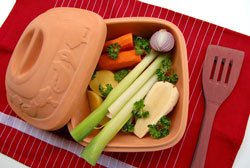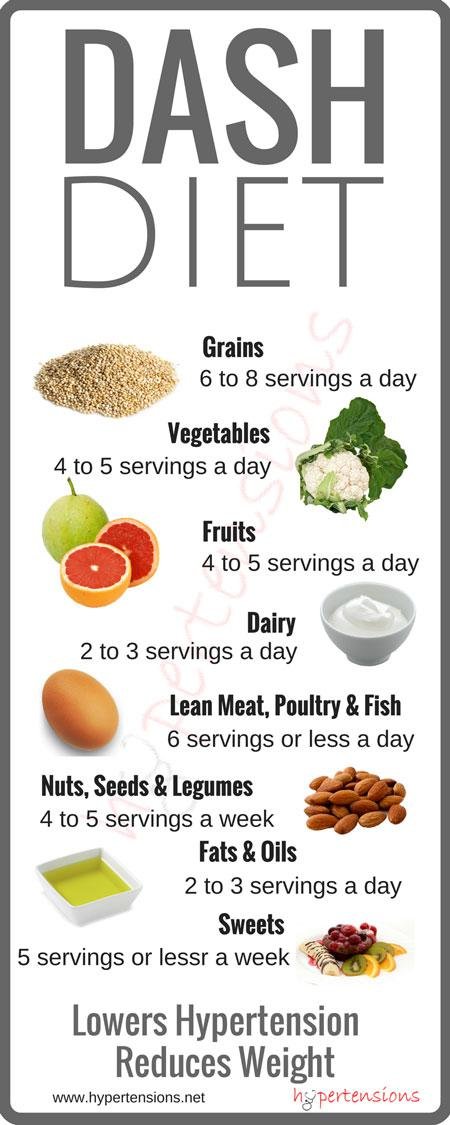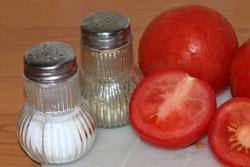Your body is an amazing machine, and just like any machine, it thrives on the right fuel. When it comes to managing high blood pressure, also known as hypertension, the food you choose plays a crucial role.
Eating the right things at the right portions can not only help you control your blood pressure but also significantly reduce your risk of other chronic diseases like heart disease.
Lets look into the powerful connection between diet and blood pressure. We'll explore how what you eat can impact your numbers and empower you to make informed dietary choices for a healthier you. We'll also delve into the DASH diet , a widely recommended plan specifically designed to combat hypertension.
The Silent Threat: Unveiling the Warning Signs of High Blood Pressure
High blood pressure often gets called the "silent killer" because it frequently progresses without any noticeable symptoms. This makes regular checkups with your doctor crucial for early detection and intervention. However, there can be some subtle signs that shouldn't be ignored. These may include:
- Frequent headaches
- Difficulty sleeping
- Dizziness
- Buzzing in the ears
- Difficulty breathing during exertion
- Chest pain
If you experience any of these symptoms, it's important to see your doctor to rule out high blood pressure or other potential health concerns.
How Diet Affects Blood Pressure: Link Between Food and Blood Pressure
So, how exactly does what you eat affect your blood pressure? Let's break it down:
- Sodium and Blood Pressure: Sodium, the main component of table salt, is a major culprit in raising blood pressure. When you consume too much sodium, your body retains extra fluid, putting a strain on your blood vessels and increasing the pressure needed to pump blood throughout your body.
- Saturated Fat and Cholesterol: Saturated fat, found in red meat, full-fat dairy products, and processed foods, can increase LDL ("bad") cholesterol levels. This cholesterol buildup can narrow and harden arteries, making it harder for blood to flow freely and contribute to high blood pressure.
- Refined Sugar and Refined Carbs: Refined sugar and refined carbohydrates, like white bread and pastries, can cause spikes in blood sugar levels. Over time, this can lead to weight gain, insulin resistance, and ultimately, an increased risk of high blood pressure.
- Potassium and Blood Pressure Regulation: Potassium is a vasodilator, meaning it helps relax your blood vessels. This can help lower blood pressure and counteract the negative effects of sodium. Fruits, vegetables, and legumes are all excellent sources of potassium.
The Power of a Balanced Diet
By incorporating a well-balanced diet rich in essential nutrients and healthy fats, you can significantly impact your blood pressure. Here's what to prioritize on your plate:

- Fruits and Vegetables: They're packed with vitamins, minerals, and fiber, all beneficial for blood pressure control. Aim for a colorful variety to reap the benefits of different nutrients. Think leafy greens, berries, citrus fruits, and brightly colored vegetables.
- Whole Grains: Brown rice, quinoa, and whole-wheat bread are excellent sources of complex carbohydrates and fiber, which keep you feeling full and support healthy blood pressure levels. Opt for whole grains over their refined counterparts whenever possible.
- Lean Protein: Fish, skinless poultry, and legumes provide essential protein without the saturated fat found in red meat. Consider incorporating plant-based protein sources like beans and lentils as well. These are not only heart-healthy but also a great source of fiber.
- Healthy Fats: Unsaturated fats from sources like olive oil, nuts, and avocados are essential for heart health and can contribute to lower blood pressure. They can help improve satiety and promote a feeling of fullness, aiding in weight management, which is another factor influencing blood pressure.
Building a Foundation for Change: Understanding the DASH Diet
The Dietary Approaches to Stop Hypertension (DASH) diet is a scientifically proven plan designed to lower blood pressure. Developed by the National Heart, Lung, and Blood Institute (NHLBI), it emphasizes a balanced and nutritious approach to eating (1). Here are the key principles of the DASH diet:

- Portion Control: The DASH diet provides recommendations for portion sizes from various food groups, ensuring a balanced and healthy intake. This helps prevent overconsumption and promotes mindful eating .
- Variety is Key: The plan encourages incorporating a wide range of fruits, vegetables, whole grains, lean protein sources, and low-fat dairy products. This variety ensures you're getting a full spectrum of essential nutrients to support your overall health and well-being.
- Limited Sodium and Sugar: The DASH diet restricts sodium intake and discourages added sugars, promoting a naturally flavorful and nutritious way of eating (2). This reduces the strain on your blood pressure and helps manage weight, another contributing factor.
Foods to Limit or Avoid: Foods Not to Eat for High Blood Pressure

While focusing on these heart-healthy staples, it's also important to be mindful of foods that can contribute to high blood pressure. Here are some common culprits to limit or eliminate from your diet:
- Processed Foods: Often loaded with sodium, unhealthy fats, and added sugars, processed foods can significantly impact your blood pressure. Canned goods, instant soups, frozen meals, and packaged snacks are some examples to watch out for.
- Fast Food: Fast food is notorious for being high in sodium, saturated fat, and unhealthy trans fats. These contribute to weight gain and can cause high blood pressure. Opt for home-cooked meals whenever possible.
- Added Sugar: Sugary drinks, candies, pastries, and desserts are loaded with added sugars. Excessive sugar intake can lead to weight gain, insulin resistance, and ultimately, an increased risk of high blood pressure.
- Red Meat: While a good source of protein, red meat is also high in saturated fat. Limit your intake of red meat and choose leaner options like skinless chicken or fish more frequently.
- Salty Condiments: Ketchup, soy sauce, and other salty condiments can add a significant amount of sodium to your meals. Use them sparingly and opt for low-sodium alternatives whenever available.
Making Gradual Shifts for Long-Term Success
Remember, making significant dietary changes all at once can be overwhelming and difficult to sustain. Here are some tips for incorporating these healthy habits into your lifestyle for the long term:
- Start Small: Begin by making small, gradual changes. Swap out sugary drinks for water, choose whole-wheat bread instead of white, or add a side of vegetables to your meals. Small wins can build momentum and motivation.
- Plan Your Meals: Planning your meals and snacks in advance can help you avoid unhealthy choices when hunger strikes. This also allows you to control portion sizes and ensure you have healthy options readily available.
- Read Food Labels: Pay attention to sodium content when choosing packaged foods. Look for options with lower sodium levels or opt for fresh, whole foods whenever possible.
- Cook More at Home: This allows you to control ingredients and portion sizes. Experiment with new recipes that incorporate heart-healthy ingredients. Cooking at home can be a fun and rewarding way to explore healthy eating.
- Seek Support: Talk to your doctor or a registered dietitian for personalized guidance and support on creating a heart-healthy eating plan that fits your preferences and lifestyle.
By following these tips and incorporating the DASH diet principles, you can empower yourself to take control of your blood pressure and create a foundation for a healthier, happier you. Remember, this journey is about progress, not perfection. Celebrate your wins, big and small, and be patient with yourself along the way.

